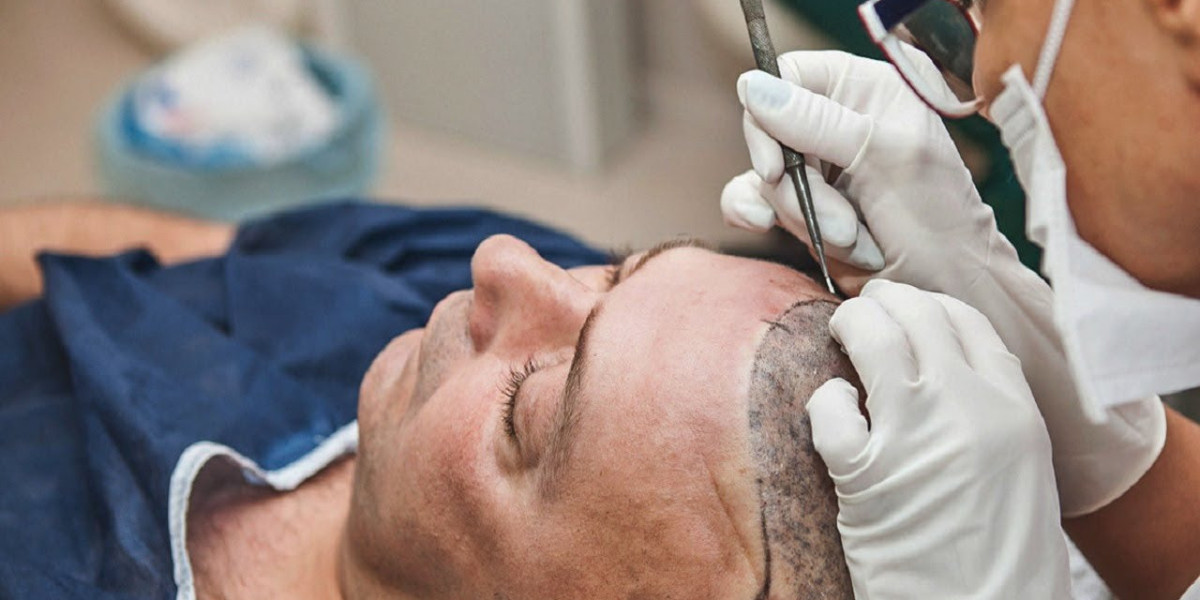Undergoing a Hair Transplant in Islamabad is a life-changing solution for hair loss, offering natural-looking results that can last a lifetime. However, one of the most common questions patients ask is, “How long will it take before I see full results?” Understanding the hair growth timeline, healing phases, and factors affecting outcomes can help manage expectations and ensure a smooth recovery.
Hair transplant results do not appear overnight. The procedure involves relocating hair follicles to areas of thinning or baldness, and these follicles need time to adjust, settle, and begin growing new strands. Patience, proper care, and consistent follow-up are essential for achieving the best possible outcome.
Why Hair Growth Takes Time After a Transplant
A hair transplant involves carefully extracting follicles from donor areas (usually the back or sides of the head) and implanting them in areas with thinning or no hair. After the procedure, the transplanted follicles go through a natural healing process before they start producing visible hair.
Immediately after surgery, it is normal to experience:
Redness and swelling in the transplanted area
Formation of scabs around the grafts
Temporary shedding of transplanted hair (shock loss)
These are all normal responses and part of the timeline that leads to full hair growth.
Hair Growth Timeline After Transplant
The journey to full hair transplant results is gradual. Here’s a detailed month-by-month breakdown:
Week 1–2: Initial Healing Phase
In the first two weeks, your scalp is focused on healing. Small scabs form around each graft, and swelling or redness may occur. During this phase, it’s important to:
Keep your head elevated while sleeping
Avoid touching or scratching the transplanted area
Use the prescribed medications and shampoo as instructed
At this stage, no visible hair growth occurs, and your focus should be on healing.
Week 3–6: Shock Loss Phase
Between weeks three and six, the transplanted hair often sheds. This phenomenon, known as shock loss, may seem alarming, but it is a normal part of the process. The follicles are not lost; they are entering a dormant phase before beginning new hair growth.
Patients often feel anxious during this stage, but reassurance from your surgeon and patience are key.
Month 2–3: Dormant Phase
After shock loss, the transplanted follicles remain dormant beneath the scalp. You may not notice any visible changes during this phase. This quiet stage is necessary, as the follicles prepare for active growth.
While your scalp may appear unchanged, internally, the follicles are strengthening and anchoring themselves securely.
Month 3–4: Early Growth Phase
Around the third or fourth month, fine, thin hairs start to emerge from the transplanted follicles. These are called vellus hairs, and they are often light in color and delicate in texture.
Although they may look sparse initially, this stage is crucial as it marks the beginning of noticeable hair growth.
Month 5–6: Significant Growth Begins
By the fifth or sixth month, the hair becomes thicker and more visible. Many patients can notice about 30–40% of their transplanted hair at this point. The hairline begins to take shape, and the overall appearance starts to improve.
During this period, hair may grow at different rates in different areas, which is normal. Patience is important as your follicles continue to mature.
Month 7–9: Dramatic Changes
By the seventh month, hair growth becomes more prominent. Density improves, and the texture of the hair becomes stronger. You will notice a significant difference compared to the early stages, and styling your hair becomes easier.
This period is often the most encouraging for patients, as the transformation becomes clearly visible.
Month 10–12: Near-Final Results
At the 10–12 month mark, around 80–90% of your transplanted hair has grown. The scalp now shows a fuller and more natural-looking hairline.
By this time, hair styling, cutting, and grooming become easier. Patients often report renewed confidence as they begin to see the true potential of their hair transplant.
Month 12–18: Full Maturation
Full results may take up to 12–18 months to appear. During this final phase, the hair continues to thicken and mature. The follicles strengthen, the hairline becomes more refined, and overall density reaches its maximum potential.
At the end of this period, the transplanted hair is permanent, as the follicles are typically resistant to the hormone (DHT) that causes male or female pattern baldness.
Factors Affecting the Timeline
The speed and quality of hair growth vary from person to person. Some factors that influence the timeline include:
Transplant Technique: FUE, FUT, and DHI may have slight differences in growth timelines.
Surgeon’s Skill: Proper graft placement and technique ensure optimal growth.
Age and Genetics: Younger patients with healthier follicles may experience faster results.
Post-Operative Care: Following aftercare instructions, avoiding smoking, and protecting the scalp accelerate healing.
Overall Health: A balanced diet, hydration, and good circulation support faster follicle development.
Tips to Achieve Full Results Faster
Follow post-operative care instructions: Use prescribed medications and shampoos exactly as directed.
Stay hydrated: Proper hydration supports healing and follicle nourishment.
Maintain a healthy diet: Include proteins, vitamins, and minerals essential for hair growth.
Avoid smoking and alcohol: Both impair blood flow and slow recovery.
Protect the scalp from sun and heat: Avoid direct sunlight and hot showers during the early recovery phase.
Be patient and monitor progress: Avoid stressing about temporary shedding or slow growth; it is all part of the normal process.
Conclusion
The journey to full hair growth after a transplant is gradual, requiring patience and proper care. From initial healing to the final maturation phase, each stage plays a crucial role in ensuring natural-looking, permanent results. While early changes may be subtle, significant improvement is usually visible by 6–12 months, with full density achieved by 12–18 months.
For those planning or recovering from a Hair Transplant in Islamabad, choosing an experienced and reputable clinic is essential for achieving the best outcomes. The Dynamic Aesthetic Clinic offers advanced techniques, expert surgeons, and comprehensive post-operative support to ensure your hair grows healthy, strong, and natural-looking. Their personalized care helps patients navigate the entire hair growth journey confidently, resulting in transformative, long-lasting results.







